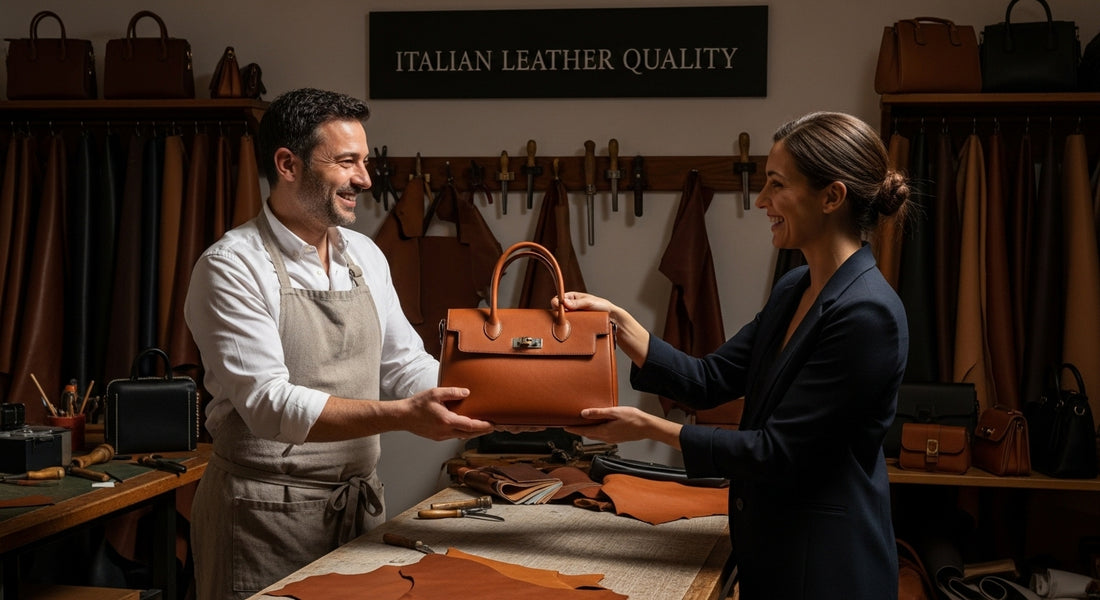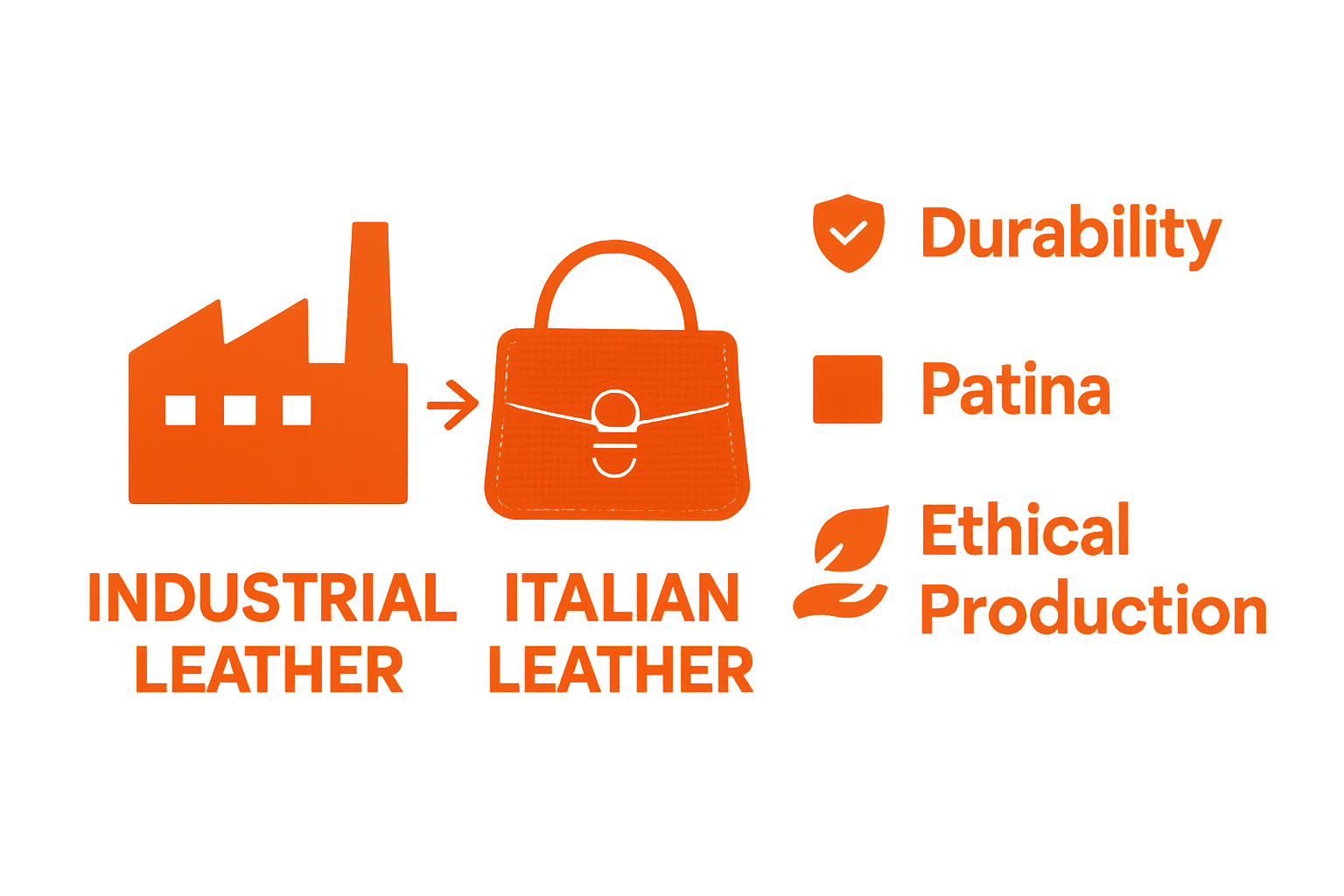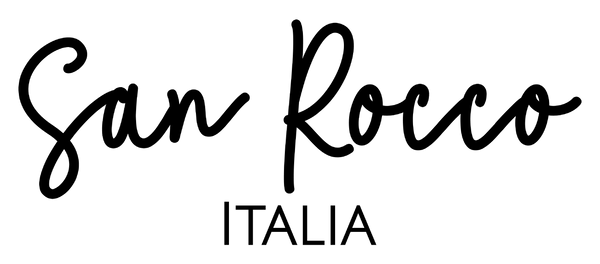
Understanding the Benefits of Italian Leather Quality
Share
Italian leather has a reputation that stretches far beyond Italy’s borders and is often seen as the gold standard for luxury goods. Yet while many people think it is just about high price tags and prestige labels, something far more interesting lies beneath the surface. Some workshops in Tuscany still use vegetable tanning methods that date back over 1,000 years. This ancient tradition, rather than glossy branding, is what truly sets Italian leather apart from the rest.
Table of Contents
- What Is Italian Leather And Its Unique Characteristics?
- The Importance Of Craftsmanship In Italian Leather Goods
- Why Italian Leather Stands Out In Quality And Durability
- Sustainability And Ethical Practices In Italian Leather Production
- How To Recognise Authentic Italian Leather
Quick Summary
| Takeaway | Explanation |
|---|---|
| Invest in genuine Italian leather | Authentic Italian leather is known for its exceptional quality and craftsmanship, making it a worthwhile investment. |
| Recognise quality indicators | Look for natural grain variations and a soft, supple feel to identify genuine Italian leather. |
| Support sustainable practices | Choose Italian leather products that prioritise environmental responsibility and ethical sourcing for a more conscious purchase. |
| Appreciate artisan craftsmanship | The unique artistry and precision in each piece reflect skill and traditions passed down through generations. |
| Aging enhances character | Italian leather develops a rich patina over time, contributing to its beauty and uniqueness with use. |
What is Italian Leather and Its Unique Characteristics?
Italian leather represents the pinnacle of quality, craftsmanship, and aesthetic excellence in the global leather industry. Renowned for its superior production techniques and extraordinary attention to detail, this material transcends ordinary leather manufacturing standards. Why invest in Italian leather offers insights into the remarkable qualities that distinguish this exceptional material.
The Origin and Heritage of Italian Leather
The story of Italian leather is deeply rooted in centuries of traditional craftsmanship. Originating in regions like Tuscany, particularly cities such as Florence and Prato, this leather production represents a generational art form passed down through skilled artisan families. These craftsmen have refined their techniques over generations, creating leather products that are not just accessories but genuine works of art.
According to European Leather Research Institute, Italian leather production combines three critical elements that set it apart:
- Exceptional raw material selection
- Sophisticated tanning processes
- Meticulous handcrafting techniques
Defining Characteristics of Premium Italian Leather
What truly distinguishes Italian leather is its unparalleled quality and distinctive characteristics. Unlike mass-produced leather, Italian leather undergoes rigorous selection and processing. Full-grain leather, the highest quality available, is carefully chosen to preserve the natural grain and imperfections that tell a unique story.
The tanning process plays a crucial role in creating leather with remarkable durability and aesthetic appeal. Traditional vegetable tanning methods, which use natural plant-based extracts, ensure the leather develops a rich patina over time, enhancing its beauty and character. These techniques not only produce incredibly durable leather but also create pieces that age gracefully, acquiring a unique personality with each use.
Moreover, Italian leather makers prioritise sustainability and ethical production. By using environmentally conscious techniques and supporting local craftsmanship, they create products that are not just luxurious but also responsible. This commitment to quality extends beyond mere appearance, embedding cultural heritage and artisanal excellence into every piece of leather produced.
The Importance of Craftsmanship in Italian Leather Goods
Craftsmanship represents the soul of Italian leather production, transforming ordinary materials into extraordinary pieces of functional art. Understanding Italian Leather Craftsmanship reveals the intricate processes that elevate these leather goods beyond mere accessories.
The Artisan Approach to Leather Manufacturing
Italian leather artisans approach their craft with an almost sacred dedication that goes far beyond mechanical production. Each piece is considered a personal expression of skill, with craftsmen treating leather not as a material, but as a living canvas that tells a story. These skilled professionals undergo years of training, often learning from generations of family members who have perfected techniques passed down through decades.
According to the Italian Leather Consortium, the craftsmanship process involves several critical elements:
- Precise hand cutting of leather
- Meticulous stitching techniques
- Individual quality assessment of each piece
- Complex multi stage finishing processes
Precision and Attention to Detail
What truly distinguishes Italian leather craftsmanship is an uncompromising commitment to precision. Artisans spend hours ensuring every stitch is perfectly aligned, every edge is carefully burnished, and every surface is immaculately finished. This level of detail means that imperfections are not merely corrected but transformed into unique characteristics that enhance the leather’s individual character.
The handcrafted nature of Italian leather goods means that each piece carries the personal signature of its creator. Unlike mass-produced items, these leather goods reflect human skill, emotional investment, and generations of accumulated knowledge. This approach ensures not just superior quality, but also creates items with genuine emotional and aesthetic value that transcend mere functionality.
Why Italian Leather Stands Out in Quality and Durability
Italian leather represents the gold standard in material excellence, distinguished by its exceptional quality, remarkable durability, and extraordinary aesthetic appeal. Understanding the Benefits of Italian Handbags provides additional insights into why these leather goods are globally revered.
Superior Material Selection and Processing
The exceptional quality of Italian leather begins with meticulous raw material selection. Artisans carefully choose premium animal hides, typically sourced from cattle raised in controlled environments, ensuring minimal scarring and maximum structural integrity. According to the International Leather Research Centre, Italian leather producers prioritise several critical factors during material selection:
- Density and thickness of the hide
- Uniformity of grain structure
- Minimal surface imperfections
- Consistent collagen fiber alignment
The processing techniques further elevate these selected hides. Traditional tanning methods, which have been refined over centuries, transform raw materials into supple, resilient leather that maintains its structural integrity far longer than industrially produced alternatives. Vegetable tanning processes, using natural plant-based extracts, create leather with enhanced breathability and a unique ability to develop a rich, appealing patina over time.
Engineering Durability Through Craftsmanship
Durability in Italian leather is not an accident but a deliberate outcome of sophisticated engineering and artisanal skill. Each piece undergoes multiple quality checks, with craftsmen assessing not just visual aesthetics but the leather’s fundamental structural strength. The combination of high-quality raw materials, expert treatment, and precision crafting results in leather goods that resist wear, maintain their shape, and actually improve in appearance with age.
Unlike mass-produced leather products that deteriorate quickly, Italian leather items represent long-term investments.
Below is a comparison table highlighting the key characteristics that differentiate genuine Italian leather from mass-produced leather products, aiding readers in recognising quality distinctions.
| Feature | Genuine Italian Leather | Mass-Produced Leather |
|---|---|---|
| Material Selection | Full-grain, carefully chosen hides | Mixed or split leather, less selective |
| Tanning Process | Traditional vegetable tanning, plant-based methods | Synthetic or chrome tanning |
| Craftsmanship | Handcrafted, artisan skill, attention to detail | Mechanised, minimal human involvement |
| Surface Appearance | Natural grain variation, visible imperfections | Uniform, often artificially embossed |
| Durability | Ages gracefully, develops rich patina | Degrades faster, limited patina |
| Sustainability & Ethics | Emphasises eco-friendly and ethical production | Often lacks transparency and sustainability |
| Certification | Traceability tags, regional origin stamps | Rarely certified or traceable |
 The careful selection of full-grain leather, minimal processing that preserves natural fibers, and handcrafted finishing techniques ensure that these pieces can withstand years of regular use while maintaining their original beauty and structural integrity.
The careful selection of full-grain leather, minimal processing that preserves natural fibers, and handcrafted finishing techniques ensure that these pieces can withstand years of regular use while maintaining their original beauty and structural integrity.

Sustainability and Ethical Practices in Italian Leather Production
Sustainability is no longer an optional consideration but a fundamental requirement in modern leather manufacturing. The Future of the Italian Leather Industry highlights the innovative approaches Italian producers are adopting to create environmentally responsible leather products.
Environmental Responsibility in Leather Manufacturing
Italian leather producers have been at the forefront of implementing sustainable practices that significantly reduce environmental impact. According to Unione Nazionale Industria Conciaria, the Italian leather industry has developed comprehensive strategies to minimize ecological footprint while maintaining exceptional product quality.
Key sustainable practices in Italian leather production include:
- Water recycling and treatment systems
- Reduction of chemical agents in tanning processes
- Energy efficient manufacturing techniques
- Waste management and circular economy principles
Ethical Sourcing and Social Responsibility
Ethical practices extend beyond environmental considerations, encompassing responsible animal welfare and fair labour practices. Italian leather manufacturers prioritize transparency in their supply chains, ensuring that animal hides are sourced from regulated agricultural environments that maintain high standards of animal welfare. This approach ensures that leather production is not just a manufacturing process, but a holistic commitment to responsible global production.
Moreover, the industry supports local communities by maintaining traditional craftsmanship practices that provide stable employment and preserve generational skills. Small and medium-sized tanneries across regions like Tuscany continue to operate with a profound respect for both human workers and environmental sustainability, creating leather products that represent more than just material goods but a comprehensive ecosystem of ethical production.
The following table summarises key sustainability and ethical practices implemented within Italian leather production, helping readers understand how these methods contribute to responsible manufacturing.
| Practice | Description |
|---|---|
| Water Recycling & Treatment | Systems for cleaning and reusing water during production |
| Reduced Chemical Usage | Use of natural plant-based tanning agents in place of harsh chemicals |
| Energy Efficiency | Adoption of energy-saving manufacturing techniques |
| Waste Management & Circular Economy | Minimising waste and promoting re-use in the production cycle |
| Ethical Sourcing | Sourcing hides from regulated, high-welfare agricultural sources |
| Support of Local Communities | Maintaining traditional craftsmanship and stable local employment |
| Transparency in Supply Chain | Providing documentation and certification for origin and process |
| Animal Welfare Commitment | Ensuring high standards in animal care and traceability |
How to Recognise Authentic Italian Leather
Identifying genuine Italian leather requires a discerning eye and understanding of specific quality indicators that distinguish authentic craftsmanship from mass-produced imitations. Understanding Italian Leather Craftsmanship provides additional context for distinguishing premium leather goods.
Visual and Tactile Quality Indicators
Authentic Italian leather possesses distinctive characteristics that set it apart from synthetic or lower-quality alternatives. According to Leather Research Consortium, several key factors help identify genuine Italian leather:
- Natural grain variation with unique surface texture
- Soft, supple feel with consistent leather thickness
- Subtle, natural leather aroma
- Minimal uniformity in surface appearance
Experienced leather enthusiasts understand that true Italian leather develops a rich patina over time, with surface characteristics that enhance rather than deteriorate with use. The leather should feel substantial yet flexible, with a natural warmth and depth that synthetic materials cannot replicate.
Certification and Provenance Verification
Beyond physical characteristics, authentic Italian leather often comes with specific certification markers. Genuine Italian leather frequently features traceability tags, origin stamps, or certification marks like “Pelle Conciata al Vegetale in Toscana” that guarantee its authentic production methods. Professional buyers and discerning consumers look for these hallmarks as definitive proof of the leather’s genuine Italian origins.
Additionally, reputable manufacturers provide detailed documentation about the leather’s sourcing, tanning process, and craftsmanship. Transparent supply chains, commitment to traditional production methods, and verifiable regional origins are strong indicators of authentic Italian leather manufacturing. Consumers should not hesitate to request detailed information about a leather product’s provenance and production techniques.
Experience the True Essence of Italian Leather Quality
Are you tired of handbags and accessories that lose their beauty and structure after just a season? Many brands cut corners with imitation materials or rushed manufacturing, but the article highlighted what truly sets Italian leather apart: durability, full-grain authenticity, and artisan-crafted details that only improve with time. At San Rocco Italia, we understand your desire for accessories that are timeless, sophisticated, and genuinely made to last. Every piece from our collection upholds the heritage, craftsmanship, and ethical values described in the article, so you never have to compromise on quality or transparency.

This is the moment to experience the difference for yourself. Discover luxury handbags and accessories crafted in Italy by skilled artisans, each finished with meticulous care and designed to stand the test of time. Visit San Rocco Italia to explore our collection and invest in the exceptional benefits of true Italian leather. Select pieces that reflect your values as well as your style. Explore our story and commitment to quality by learning more about Why invest in Italian leather and Understanding Italian Leather Craftsmanship before you shop. Choose beauty and integrity today.
Frequently Asked Questions
What makes Italian leather unique compared to other types of leather?
Italian leather is distinguished by its exceptional quality, meticulous craftsmanship, and traditional tanning processes. It often features full-grain leather that preserves natural textures, ensuring durability and a rich patina that develops over time.
How can I recognise authentic Italian leather?
Authentic Italian leather typically exhibits natural grain variations, a soft supple feel, and a subtle leather aroma. It may also come with certification markers that verify its origin and production methods, such as traceability tags.
What are the benefits of choosing Italian leather products?
Italian leather products offer superior durability, aesthetic appeal, and sustainability. The craftsmanship ensures that each piece not only looks beautiful but also withstands wear and ages gracefully, making them long-term investments.
How should I care for Italian leather to maintain its quality?
To maintain the quality of Italian leather, clean it with a soft cloth, avoid exposure to excessive moisture, and use appropriate leather conditioners. Regular care helps preserve its natural beauty and longevity.
Recommended
- Why Invest in Italian Leather: Understanding its Value – San Rocco Italia
- Understanding Italian Leather Craftsmanship: Timeless Quality – San Rocco Italia
- Understanding the Benefits of Italian Handbags – San Rocco Italia
- The Future of the Italian Leather Industry: Trends & Insights – San Rocco Italia


